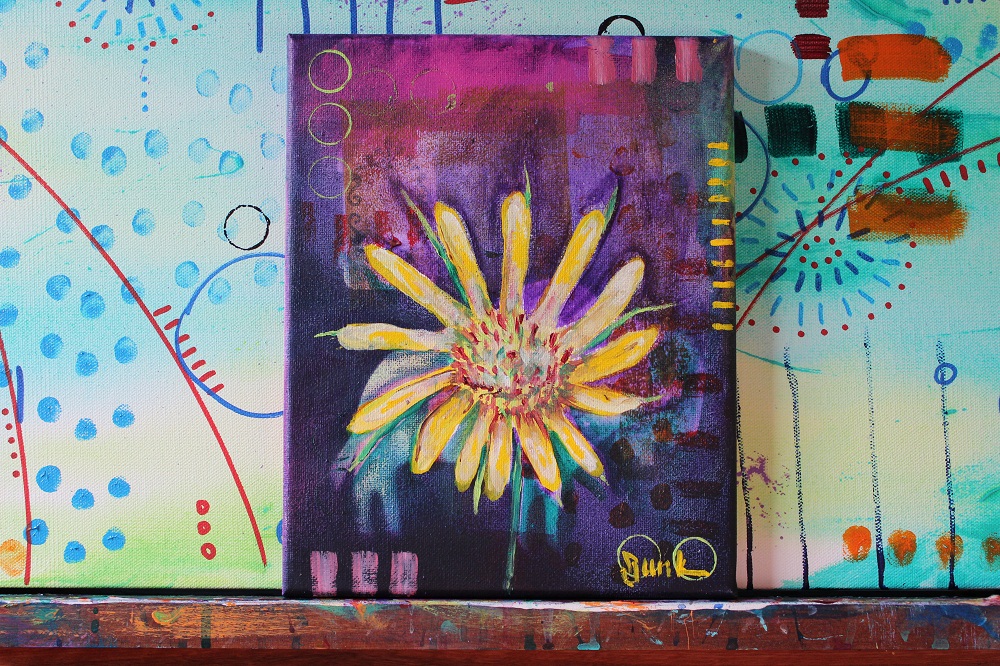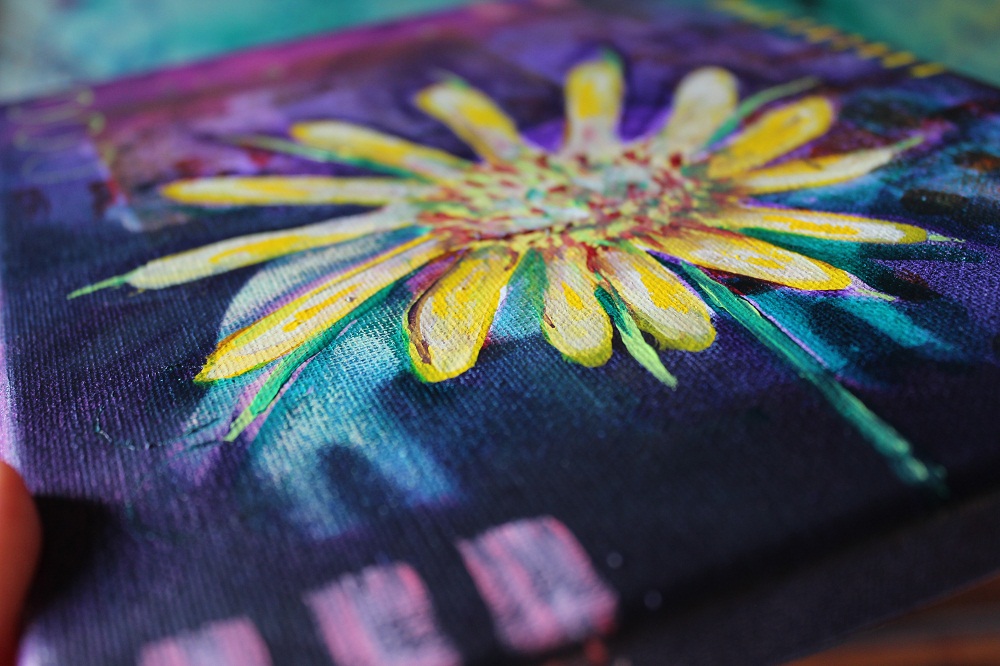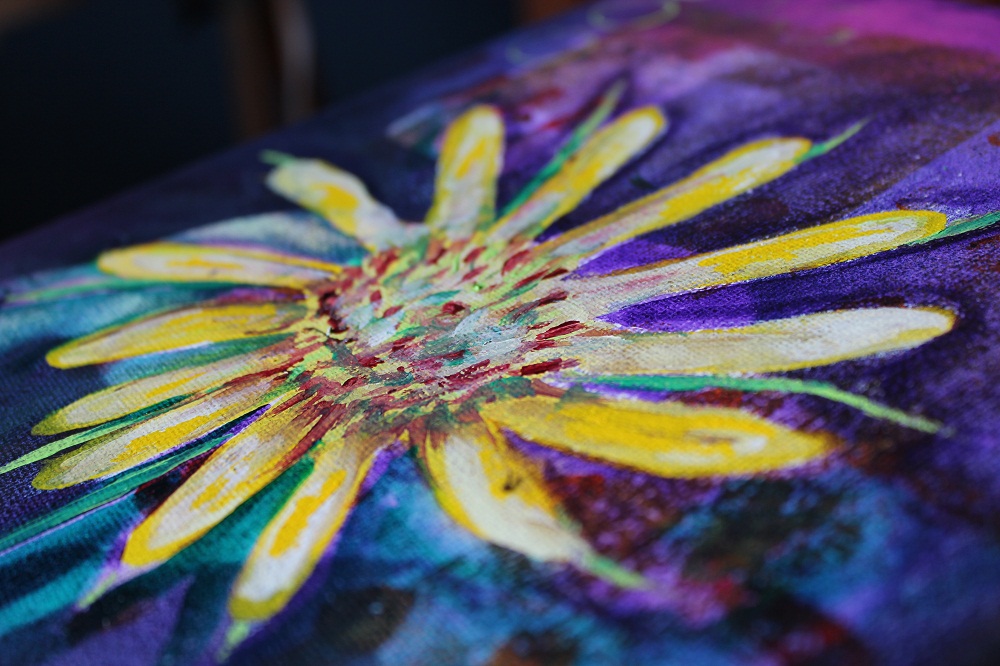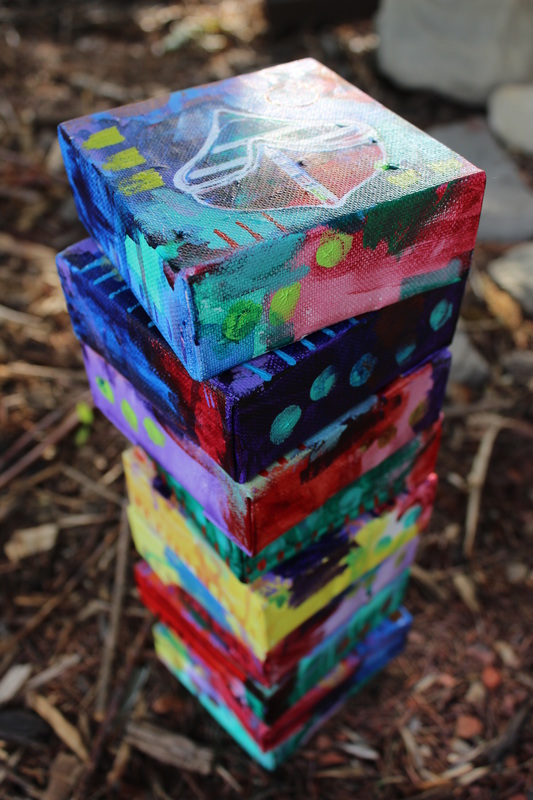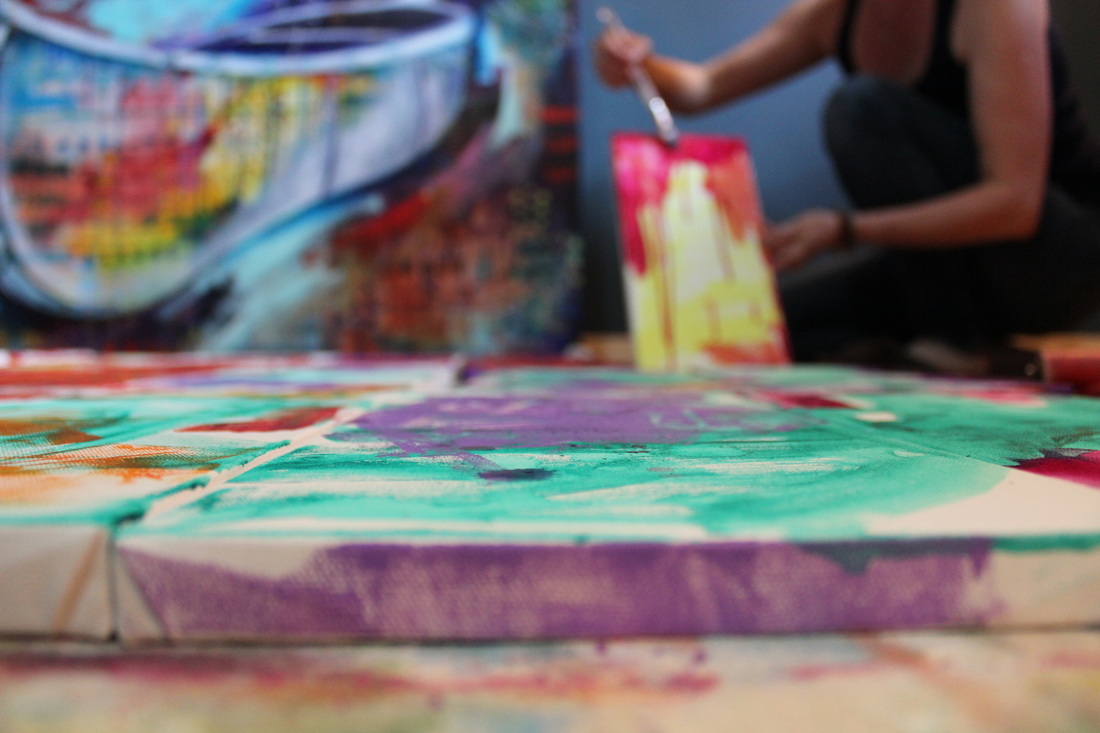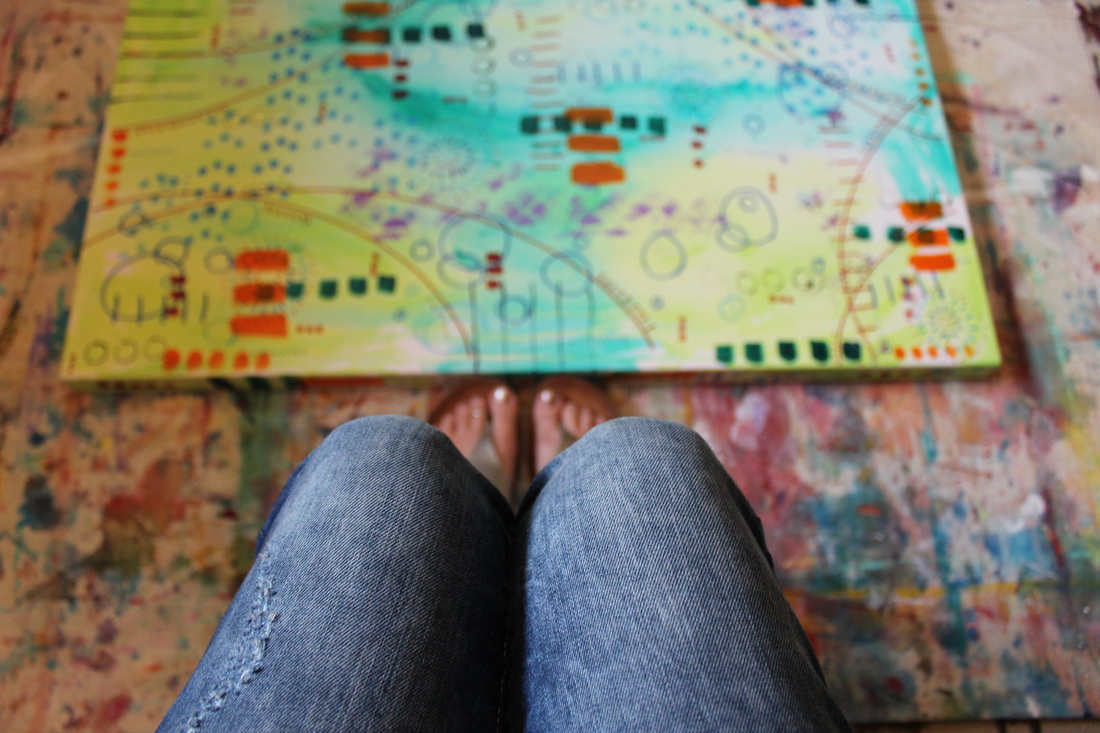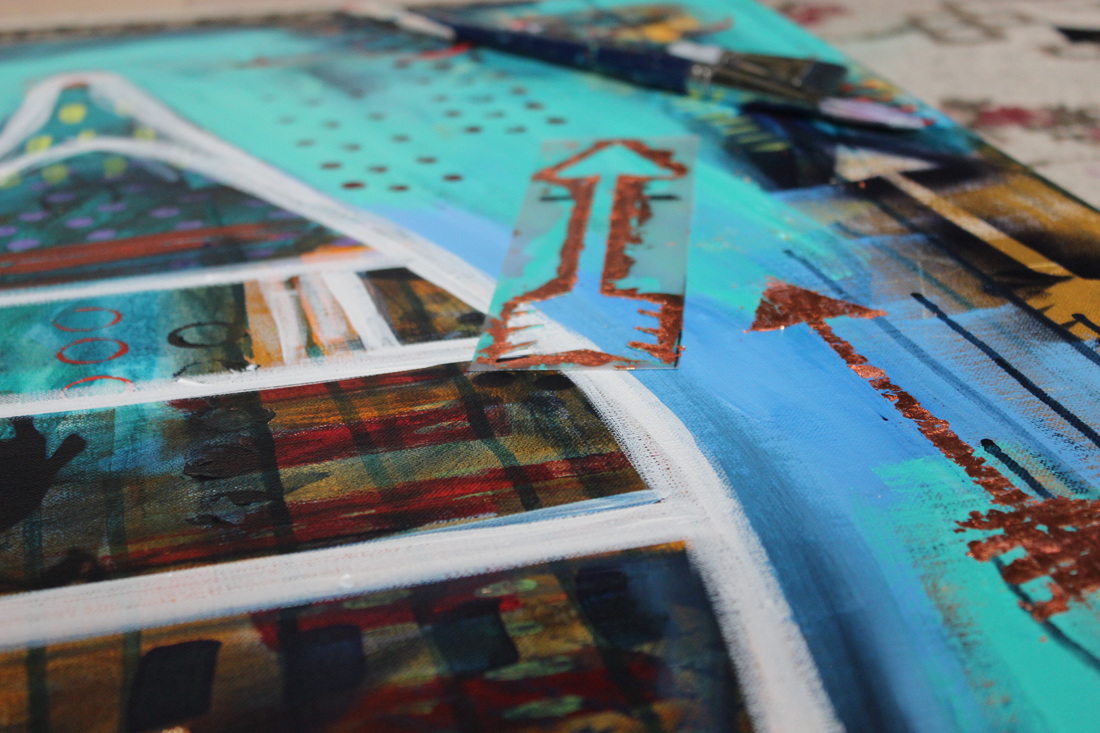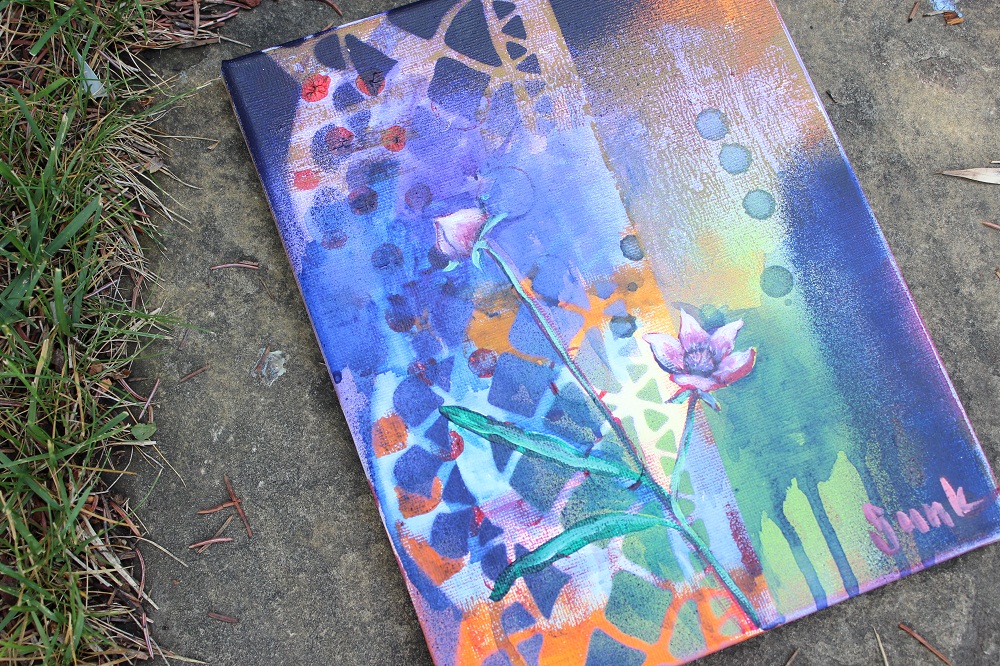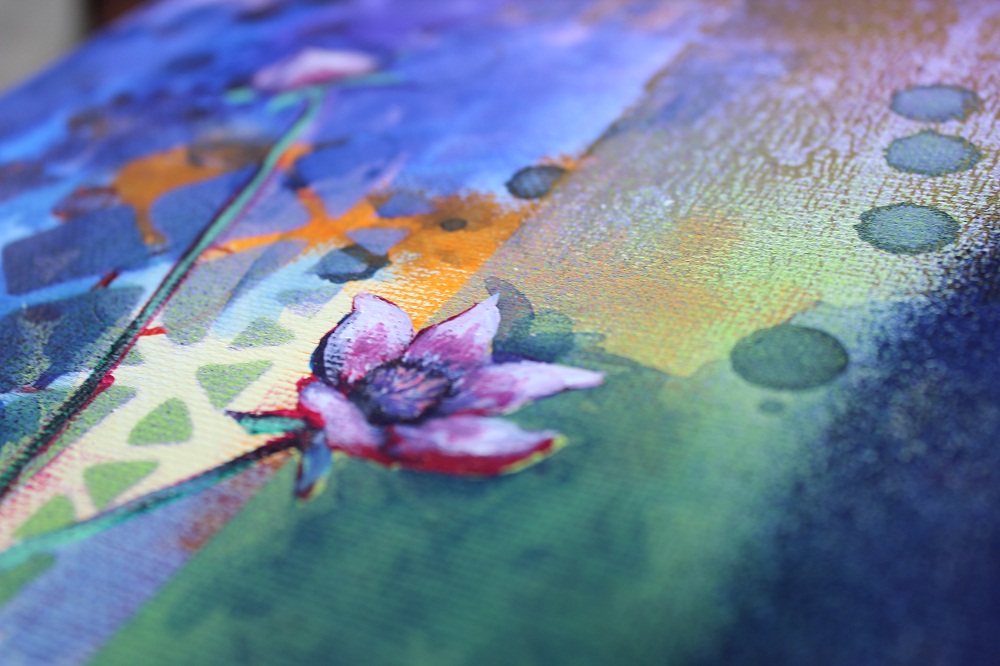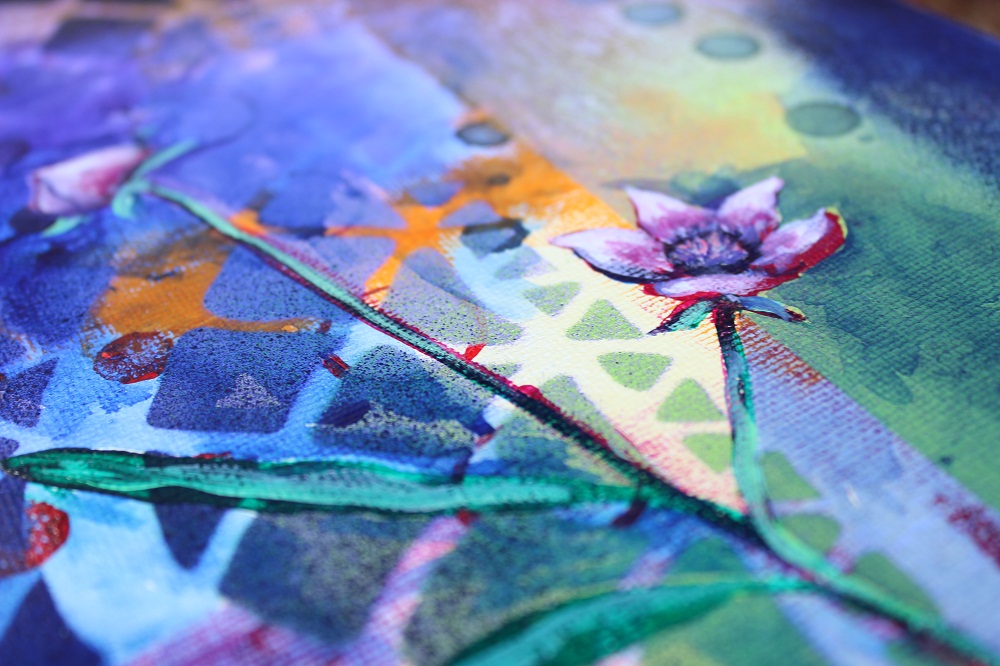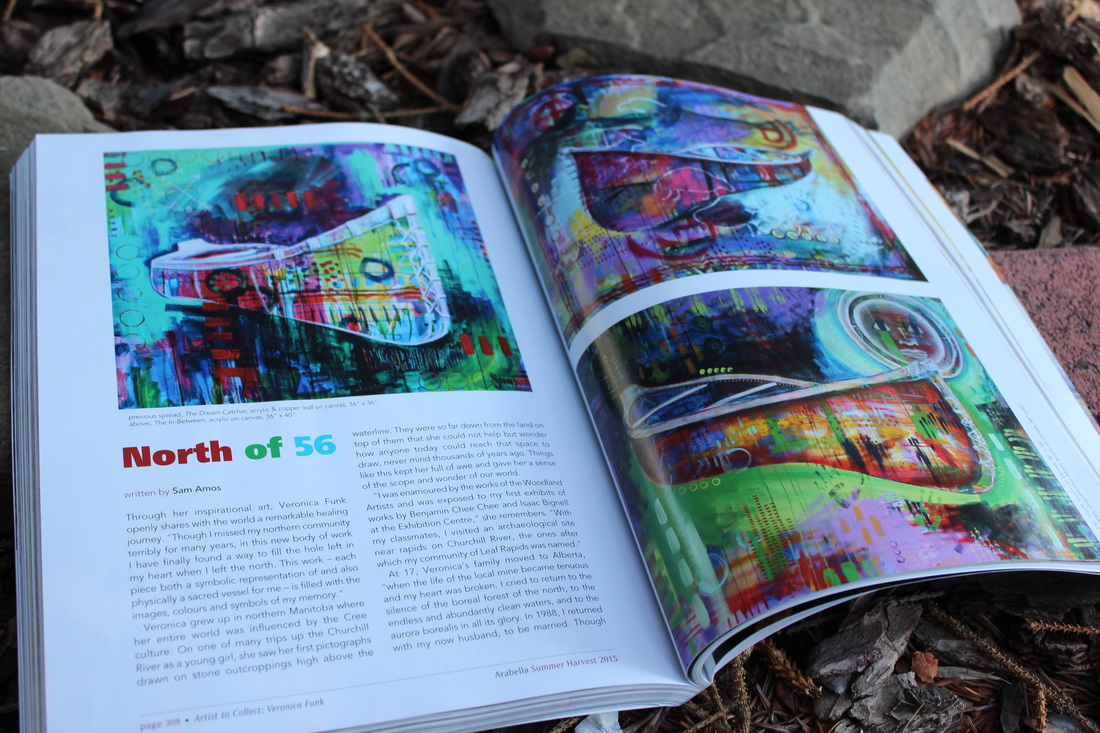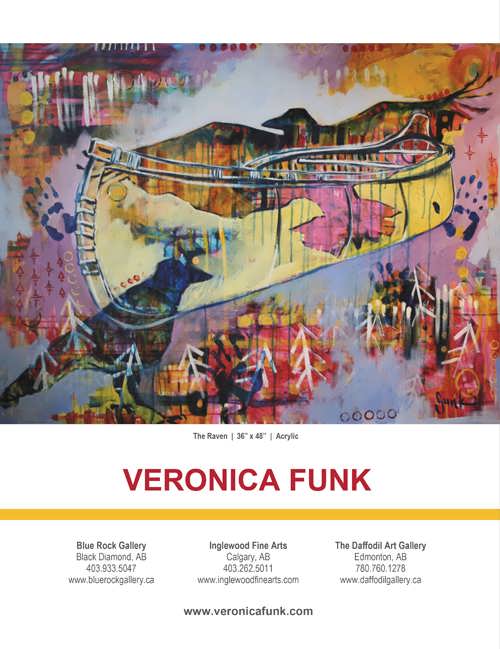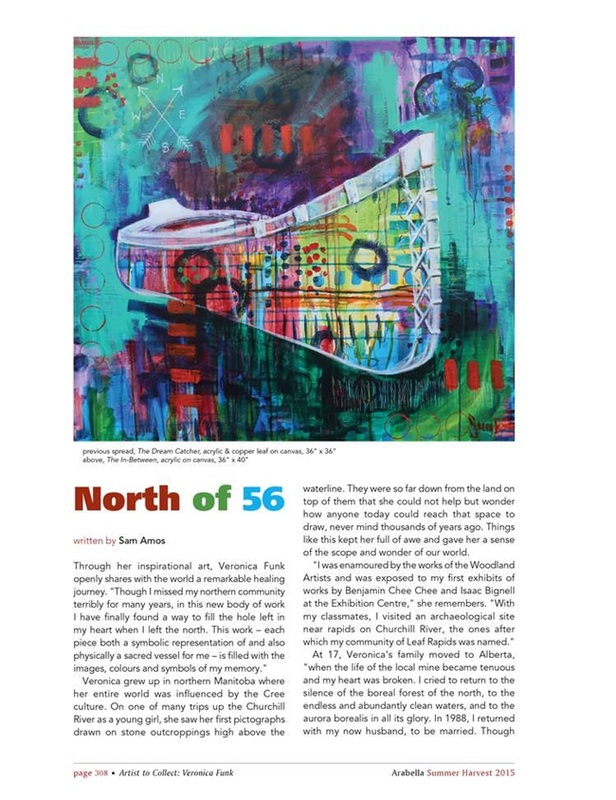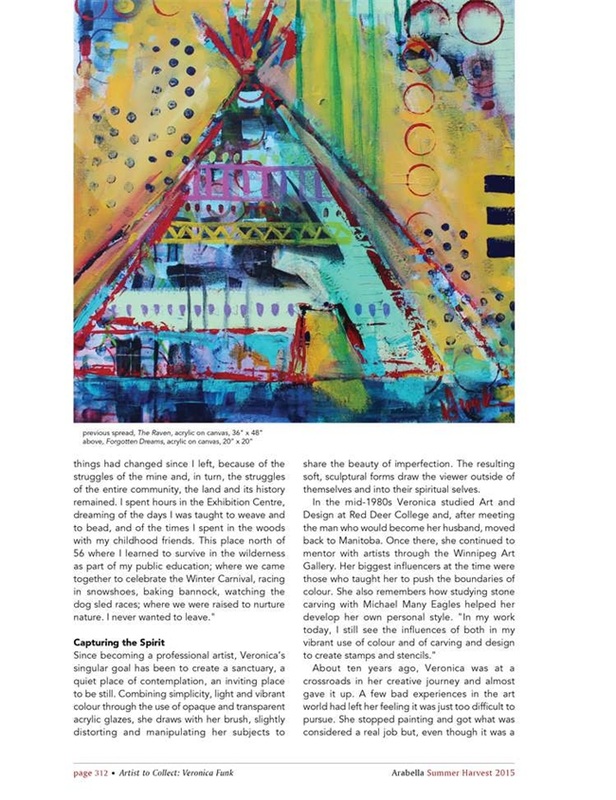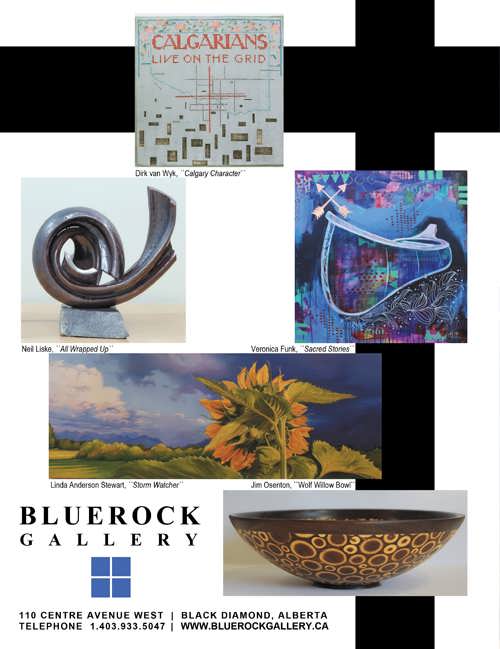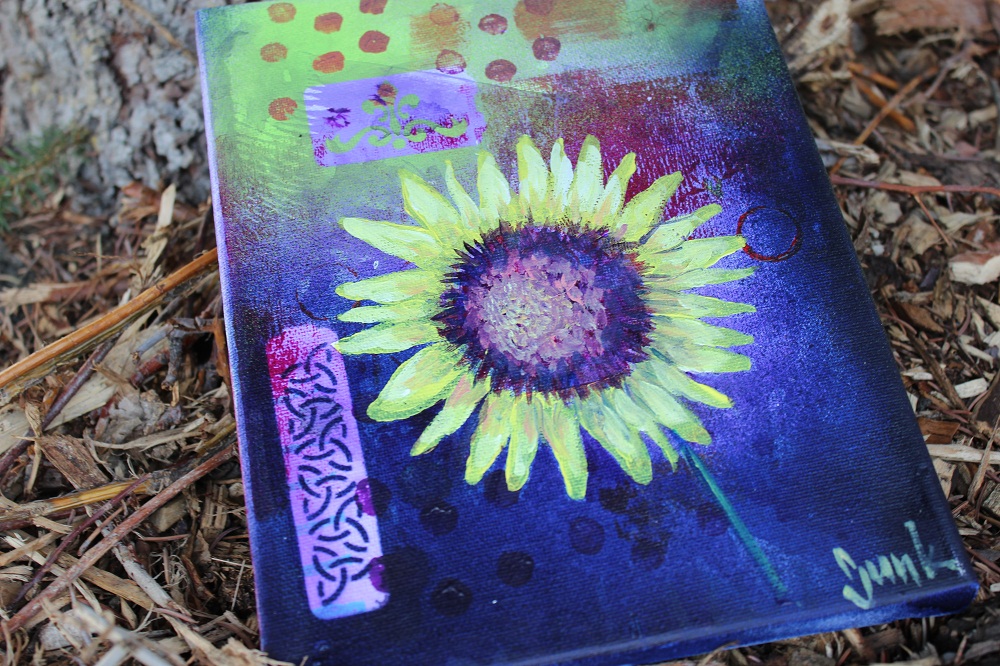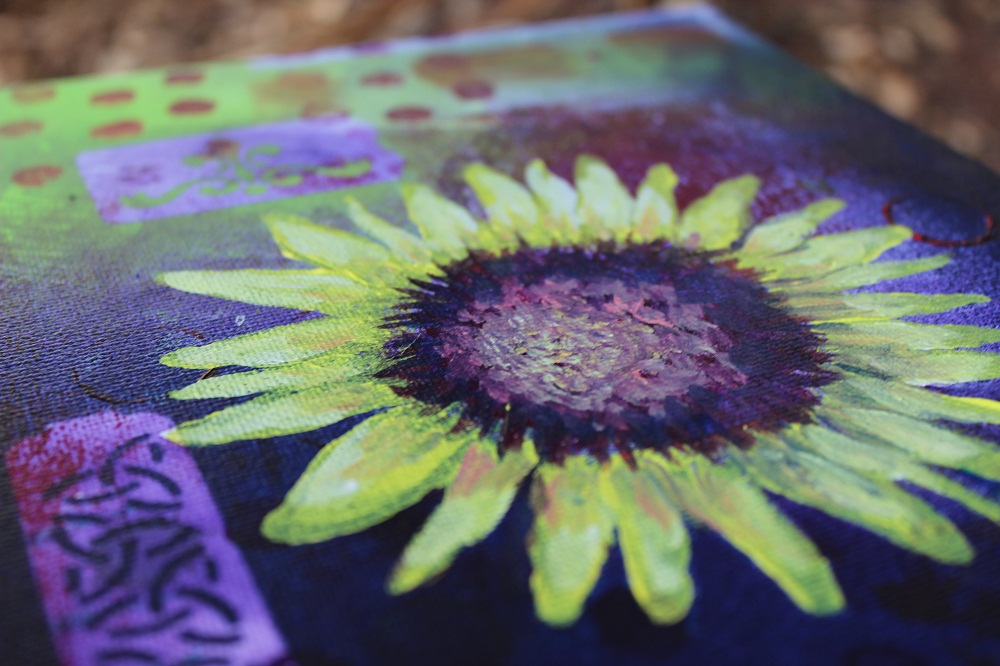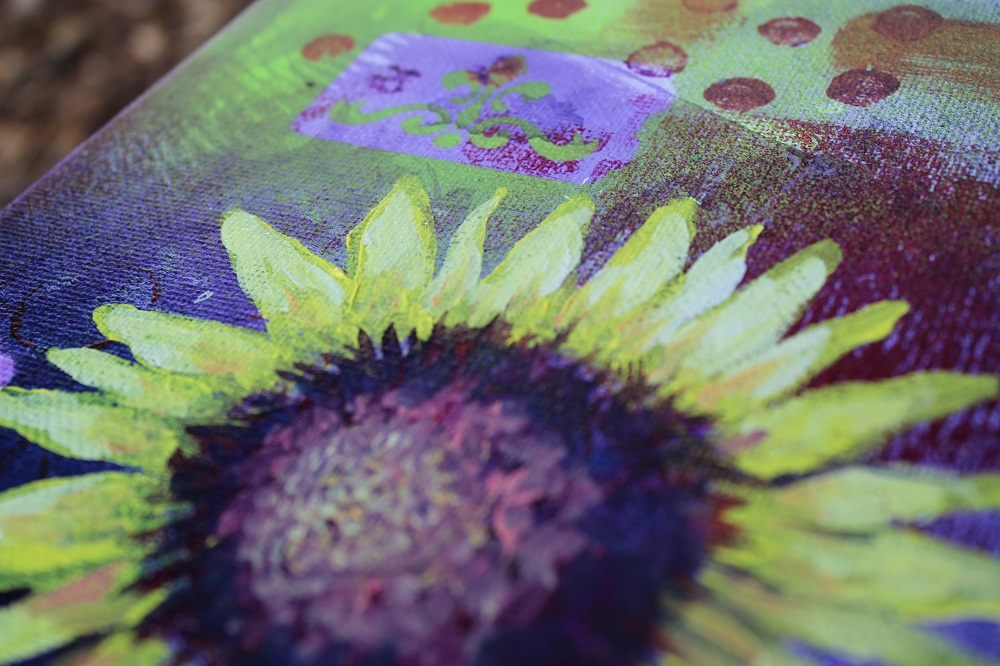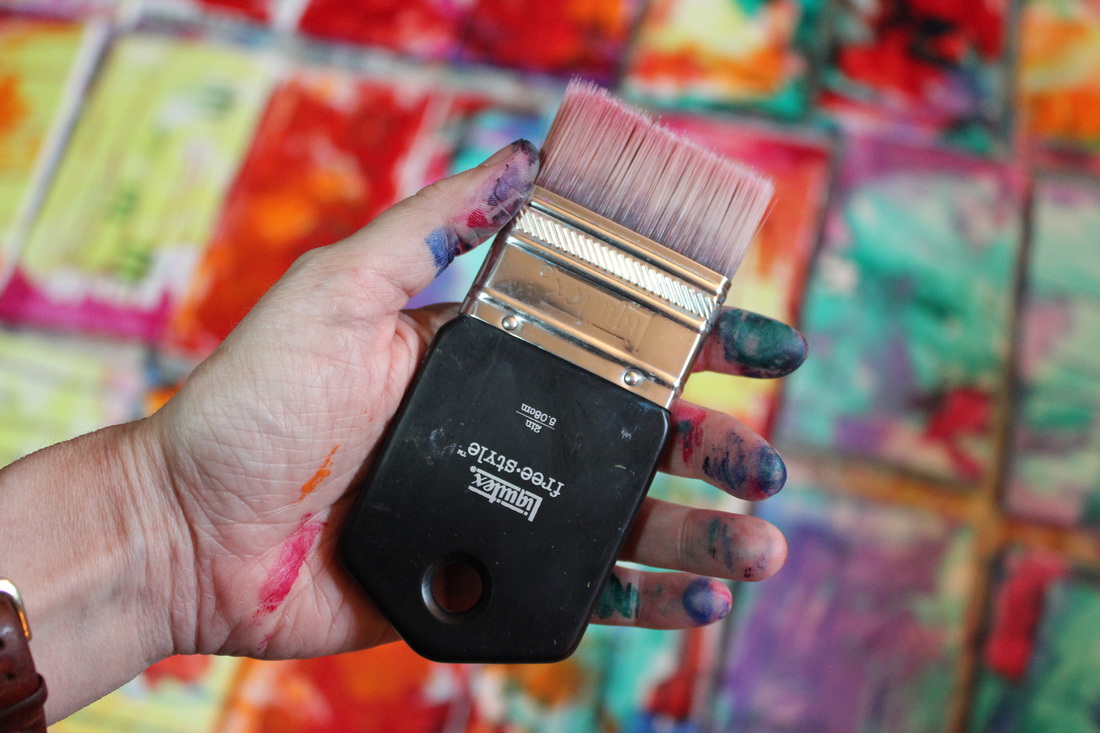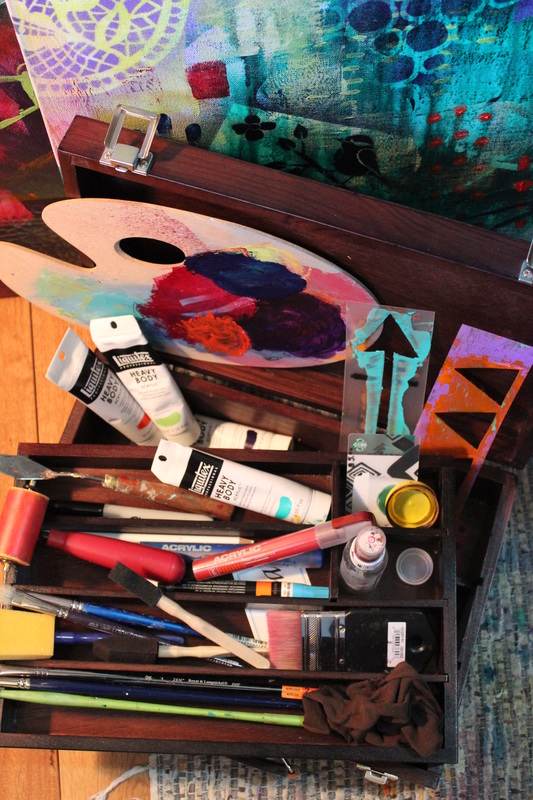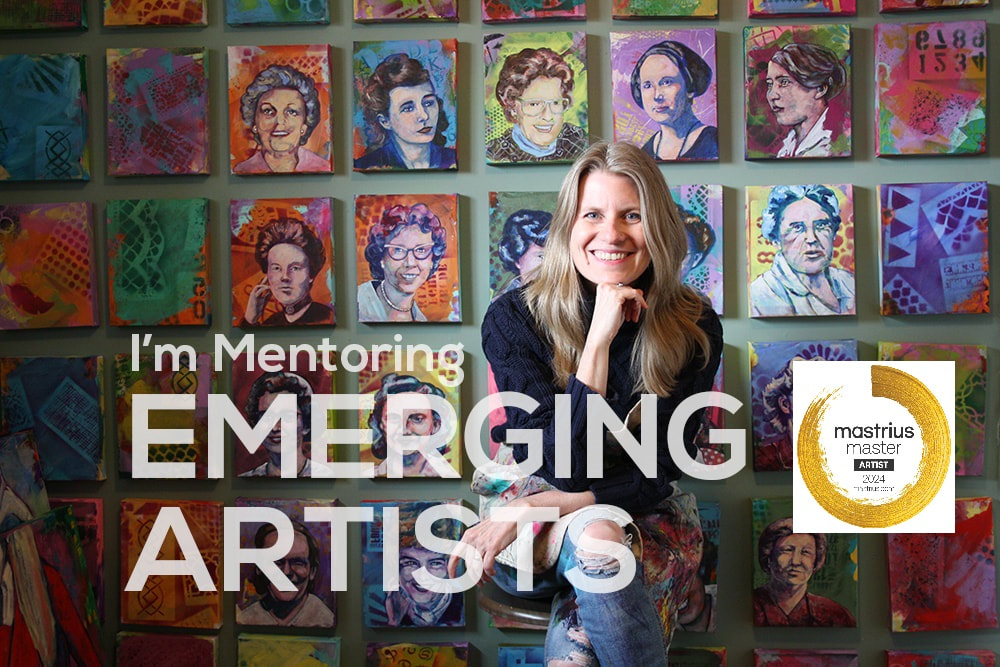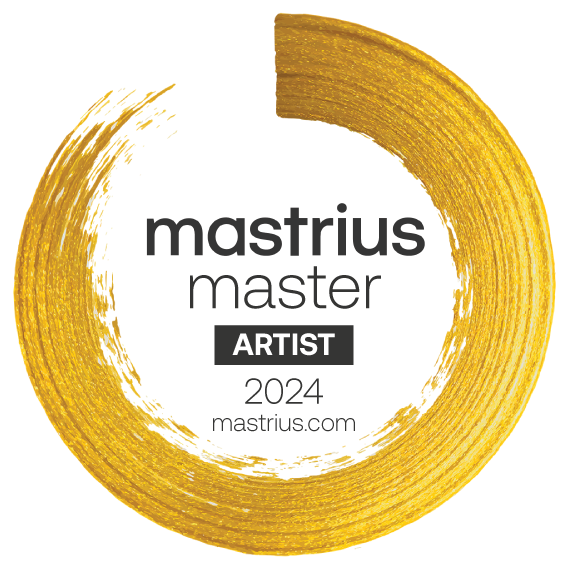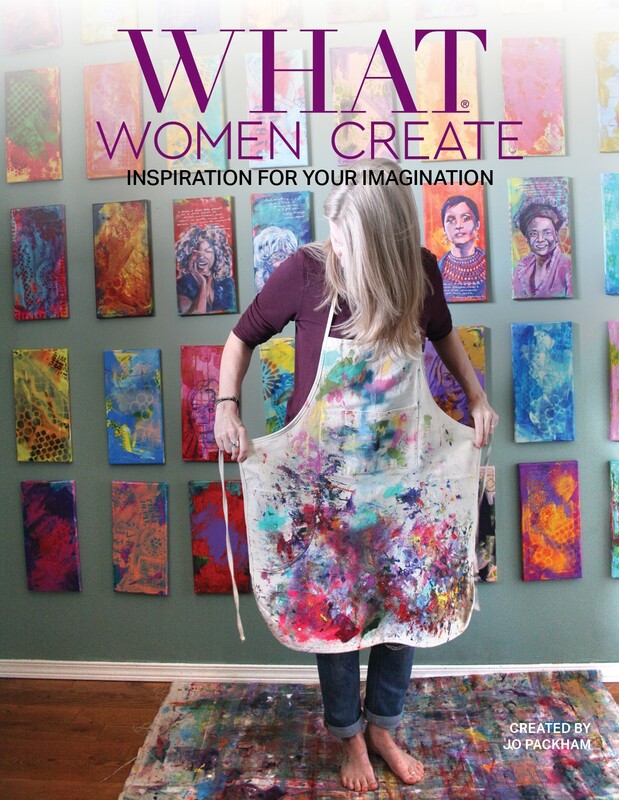|
Goat's-Beard is one of my favorite plants in our garden, and though it is a bit of a different variety (tame rather than wildflower) I love this plant. The flower is sensitive to changes in weather and opens only on sunny mornings while remaining closed for the rest of the day while not opening at all on overcast days. Medicinally the plant was used as a diuretic as the milky juice from the stems and leaves would harden slightly to be chewed like gum. The roots were often harvested to be stored and cooked like beets or carrots.
I'm often asked how I can share my work publicly, whether online or in exhibits or via sales. It hasn't always been easy. There is always the fear of rejection when submitting proposals, and once they're accepted, rejection from the general public. Especially since a good year or two of hard work goes into the creation of a body of paintings - a lot of life and emotion is committed to the canvas. But I love to paint, I have tried not to do it but it was to my detriment, and so I paint a lot. I can only store so much work in my house before I become claustrophobic (anyone who knows me knows how anal I am about too much stuff - even stuff I love).
Plus, I dreamt about being a professional artist for as long as I can remember. Not about the exhibiting part but about the making part. I was an extremely introverted child and found my joy in creation. And it excites me when others fall in love with my work, too. Thankfully I keep creating whether or not I have an exhibit ahead of me, but it certainly is easier to stay focused and committed when I have things to work towards. I have always been afraid of the judgement, of being accused of replicating someone else's work or of being a terrible artist. But I've found that it really doesn't matter what I do, as long as it comes from a deep part of myself, from my own experiences and using the skills I have been gifted with over time. In the past I took critiques from other artists or gallerists too closely, believing that they knew better than I and yet as I keep working how I feel led to work, things get better and I feel the most connected to what I do. Learning to let go and allow others to connect to my work however they do is a wonderful thing. I know that my form of expression won't always be understood by others but I also know that that's okay. And, in spite of my fears, the most rewarding part of exhibiting and sharing my work is the positive feedback I receive. And, boy, when my work finds a new home, that is the most incredible feeling. It's definitely worth overcoming the fear and taking that leap of faith. Whenever I feel stress, whether real or imagined (I am rather sensitive), I find the best way to overcome it is by hitting the studio. These are the times I may not be able to focus on details or getting into the meatier part of my work, but great times to throw colour on canvas and wire and stretch (on occasion). Once I get into the work everything dissipates...my shoulders relax and my mind clears and, though I may still have concerns in other areas of my life, at least I feel a bit of a reprieve. It can be very productive time for me. And often, once I make it through this time, on the other side of it is a breakthrough or a gift of some sort. And so I breath and pray and paint and wait as this too shall pass.
"To be an artist,
you have to give up everything, including the desire to be a good artist." - Jasper Johns Typically I believe that art should speak for itself and doesn't really require a title, and yet, I can't bring myself to name my work 'Untitled'. Plus, it is always intriguing to me to read the title of a work and, particularly when it's not describing a place or thing specifically, to wonder why the artist chose it. I'm enamoured with words, thus my obession with books, and find it interesting how titles come to me...sometimes, through what I'm reading or have heard or seen, or through a memory or something that I am experiencing at the time, or is happening in the world at large.
Awhile ago I was working on a piece that reminded me of harvest, the harvest moon to be exact, and I was thinking of Neil Young's song and remembered seeing the most beautiful, huge, burnt orange harvest moon two years ago with my daughter and so 'Harvest Moon' became my title. Recently I was looking at a photo of one of my older pieces and though the title was just one word, the song that was playing on the radio that day jumped into my mind. As much as my work is intuitive, adding shapes and colours as I am drawn to them, so are the titles. Marsh cinquefoil is a member of the potentilla family and is found in swampy areas near ponds and streams with flowers that are purple to deep red. The flowers have an offensive odour which attracts insects and the roots have been used in a decoction to treat dysentry and stomach cramps. The leaves can be dried for use as a substitute for tea and a red dye created by using the flowers.
I just returned from two weeks of travel, from painting at Effusion Gallery in Invermere, BC to visiting family and friends in Winnipeg, MB. We visited the Canadian Museum of Human Rights (which was fantastic!), ate pizza at Colloseos Ristorante in Little Italy (always delicious), toured the Mennonite Heritage Village Museum (mmmmMennonite food) in Steinbach and camped, hiked and cycled at Birds Hill Park. We returned home in the wee hours of the morning, and during a visit to Indigo saw the latest issue of Arabella Magazine which features my work! The magazine is available at Chapters, Indigo and Barnes & Noble across North America and at Bluerock Gallery in Black Diamond, AB. What a great way to end an excellent vacation.
Brown-eyed Susans are a highly recognizable wildflower that grow in abundance in grasslands and along roadsides. Traditionally many First Nations' people used the plant medicinally to relieve issues from gastroenteritis to saddle sores on horses. The roots were used in a tea to treat colds, as a wash for snakebite and swelling, and the juice used for earaches.
I know, I know...I'm pretty sure I mention this paintbrush every few months but it has to be one of my favorite go-to studio tools. Though the bristles are short, they definitely hold a large quantity of paint which is terrific when I want to cover lots of canvas quickly (a good tool to begin a canvas with) and hold a lot of water to create those drips that I love so much. I like the shape of it as it sits very comfortably in my hands (I tend to use both my hands when I get engrossed in my work) and is very easy to maneuver in order to manipulate all that juicy colour I like to use. When I stumble upon these again sometime I may just have to invest in another size.
Whenever I'm asked to paint live I like to work on a larger canvas (24-36 inches) so that it's easier for everyone to see what I'm doing. That means bringing along a larger travel easel and a larger 'tool' box. Here is a list of my favorite items to travel with:
1. palette 2. paints (typically about 8 colours: ie. a red, blue, yellow, white, turquoise, lime, purple and magenta or alizarin) 3. a variety of brushes (foam & regular) 4. paint pens 5. mark-making tools: lids, palette knife, brayer, card 6. spray bottle 7. rags 8. stencils 9. water dish (I've begun using a collapsible pet water dish) I also bring along a nametag (which I usually forget to wear), a rag rug for under my easel (since my work tends to be a bit messy) and a camp stool (which I use as a table of sorts for my paint box). Finally, I try to remember to bring a small moleskin sketchbook, a water bottle and granola bar, and my camera. Actually, now that I think about it, this is basically what I use in my studio as well, just a little more of it all. |
|
